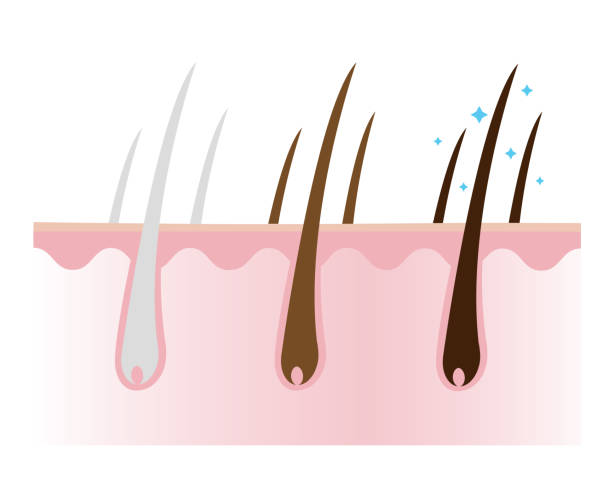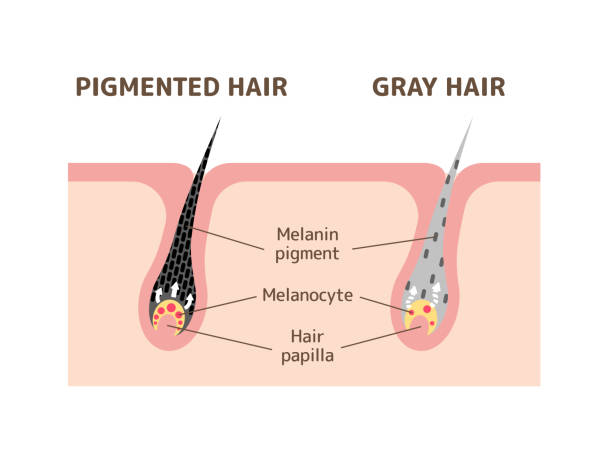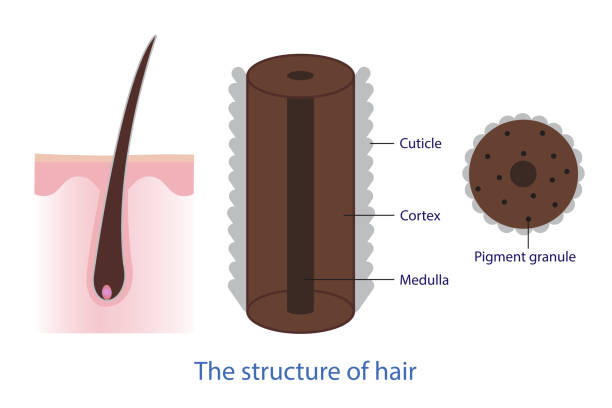What determine your natural color?
The main structural ingredient in human hair is a protein called keratin. Keratin is what your hair and fingernails are made of. However, keratin is not the only ingredient in human hair. To create natural color, melanocytes - which are cells in the skin - add pigment. These melanocytes create the natural pigment known as melanin and deliver it to the cells that create keratin for your hair. The melanocytes are responsible for creating melanin, the natural pigment that gives color to your hair. Melanin is then delivered to the cells that create keratin, which is a protein that makes up your hair.

There are two types of melanin - eumelanin and pheomelanin. Eumelanin is a dark pigment that gives hair a brown or black colour. Pheomelanin is a lighter pigment that gives hair a red, orange, or yellowish colour. Someone with black or dark brown hair is likely to have high eumelanin levels, while someone with red hair typically has higher levels of pheomelanin. Blondes, on the other hand, generally have low levels of both types of melanin.
The loss of melanocytes as we age is the primary cause of graying or white hair. The amount of eumelanin and pheomelanin in our hair is determined by our genes, so primarily it is our genes that determine the color of our hair as we age.

The protein associated with the melanocortin 1 receptor or MC1R gene is responsible for stimulating the production of eumelanin in melanocytes. Eumelanin is the pigment that gives black or brown hair its color. When MC1R is not active, melanocytes produce mostly pheomelanin instead.
How does hair dye work on changing hair color?
The Medula is the core of the hair layers and it's surrounded by a thick layer called the cortex which is where you find the pigmented melanin proteins that give hair color. The outermost layer, the cuticle, protects the cortex and it's made up of overlapping scales.

There are three types of hair dye - temporary, semi-permanent, and permanent - each with their own chemical formulations. Temporary dye only coats the hair's surface, while semi-permanent dye contains tiny pigment molecules that penetrate the outer layer of the hair (the cuticle) and attach to the cortex (the middle layer). Because it doesn't chemically react with anything in the hair, semi-permanent dye will usually last up to 12 washes before it starts to fade.
Permanent hair dye generally consists of two solutions: an alkaline chemical and a developer. The alkaline chemical combined with dye precursors and dye couplers form the new color. The developer, an oxidizing agent, is usually a weak solution of hydrogen peroxide.
In order to achieve a new hair color, it is necessary to remove the existing color first. When mixing the two solutions together and applying them to your hair, the alkaline chemical will open up the cuticle and temporarily soften and relax the cuticle scales. This will allow the new hair color to be applied more evenly.
The developer works to oxidize melanin molecules in the cortex, breaking the double carbon electron bonds that hold melanin together. In doing so, it fills in the spaces with oxygen atoms and brings the new color molecules together.
Colorless chemicals that develop color when oxidized are called intermediates. These pigmented particles slip through the cuticle scales like semi permanent dye, but the dye couplers react with the intermediates to form polymerized pigment. This process creates pigment molecules that are too large to slip back out, making the color more resistant to fading through multiple washes.
